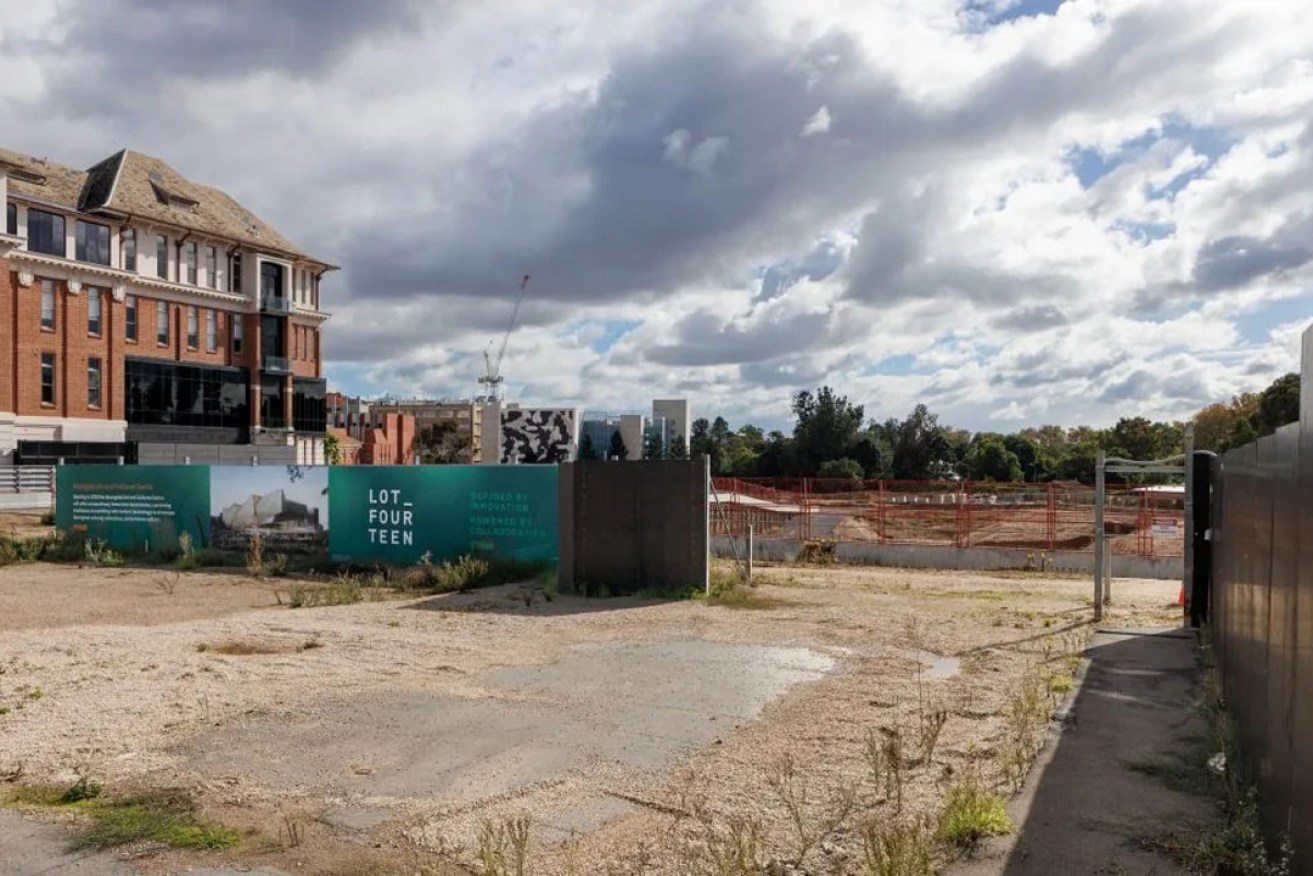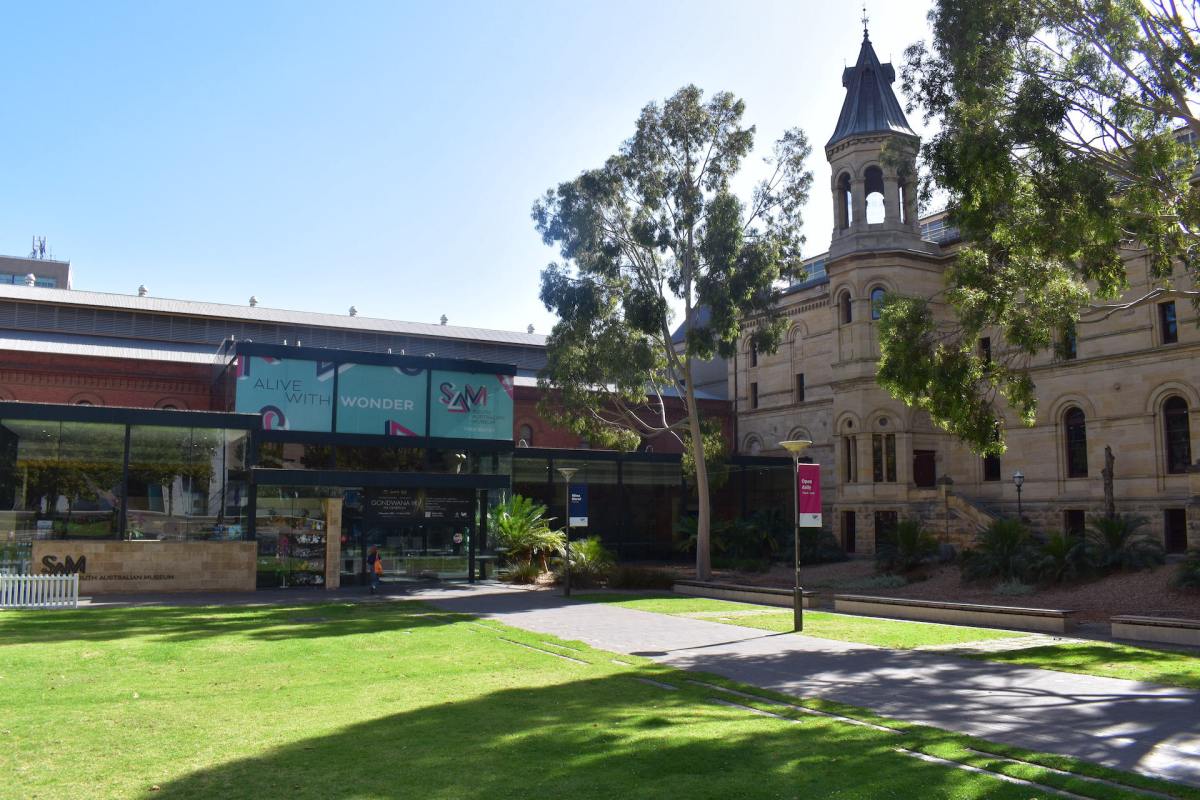South Australia’s slow-moving cultural crisis
In the red-hot glow of Adelaide’s festival season, it can be difficult to see just how badly our cultural fabric is starting to fray.


The site of the proposed Tarrkarri Centre for First Nations Cultures remains empty on North Terrace. Photo: Tony Lewis/InDaily
Premier Peter Malinauskas stood in front of the cameras on the sweltering weekend, in a sensible pair of shorts, to celebrate locking in WOMAdelaide for another five years.
As usual, his pitch was almost all about money: the fabulous impact of the event on hotel occupancy, the number of four-day passes sold, and some wild numbers about its economic impact ($35 million, he claimed, in 2023 alone).
The media release did include a couple of words hinting at its broader impact – the Botanic Park festival adds to the “richness of our community”.
It was a classic example of how modern governments view cultural events: they are drivers of economic activity. Full stop.
For our major cultural institutions, responsible for expensive bricks-and-mortar sites and large collections, this narrow perspective has had a grinding effect on their capacity to do their jobs, let alone change, adapt and grow.
They’ve been subjected to repeated “efficiency dividends” – neo-liberal speak for cuts – and have had very little capital investment this century.
They feel constrained from public advocacy because they can’t bite the hand that feeds but there is a growing sense of internal crisis.
The signs are obvious if someone cares to look.
They call us the festival state for a reason!
Just this weekend we have WOMADelaide, the Fringe, Adelaide Festival and Writer’s Week all on at once.
All bringing Adelaide to life! pic.twitter.com/QUjfWF0ADQ
— Peter Malinauskas (@PMalinauskasMP) March 10, 2024
Tandanya National Aboriginal Cultural Institute has been closed since before NAIDOC Week last year, due to staffing issues and a crumbling building on Grenfell Street. The non-profit organisation isn’t technically a government-run institution, but it has always relied on state government funding. It’s part of our cultural fabric.
Tandanya’s post-pandemic struggles no doubt haven’t been assisted by the long saga of Tarrkarri – the mooted national Aboriginal cultures centre favoured by the Marshall Government. The Liberals were slow to progress the project and, now, it has been put on hold by the Malinauskas Government which is hoping philanthropic money will help it fund the project. It could cost as much as $600 million.
The clock is ticking. While other states work on building similar institutions, Tarrkarri remains a hole in the ground on Lot Fourteen on North Terrace.
There’s also the stark fact that if it does go ahead, the cultural budget across the state will be under even more pressure.
Take a short stroll down the cultural boulevard and you’ll come to the South Australian Museum where chief executive David Gaimster says the institution is at “the tipping point”.
In response, he’s trying to reconfigure the way the museum works but his plan, which will refocus positions from research to curation, has the Museum’s own staff – and people like former director Tim Flannery – warning of disaster.
Straight-talking Lord Mayor Jane Lomax-Smith, a former board member and long-time supporter of the institution, belled the cat on ABC Radio Adelaide: the Museum has suffered from chronic, long-term underfunding. Pure and simple.
Why else would it struggle to keep track of its treasures, apart from being starved of funds?

The South Australian Museum. Photo: Charlie Gilchrist/InDaily
Take a step west, and you’ll find the State Library, part of a public library network across the state that has its own funding problems.
Cross the street and stroll back down North Terrace to the Freemasons Hall, where you can stand and ponder what might be.
The Masons and their commercial partners plan a huge high-rise development, part of which includes a $200 million commitment to construct a new Adelaide Museum of South Australian History, with the government to lease back, or if it chooses, buy the space.
This offer is on the table for the History Trust, which has long wanted to fill this gaping hole in its museum offerings. (Remember the Constitutional Museum at Old Parliament House? It was a great insight into our political history – taken over by our politicians as office space after Parliament House ran out of room.)
The state government has been sitting on the business case and says the idea of funding is being thrown into the 2024/25 budget process or, to describe it more clearly, the cultural Hunger Games.
The government is developing a cultural policy for South Australia but this document will have a lot of work to do if it’s going to start to address our growing cultural deficits.
The list of capital needs and wants has become overwhelming.
As has been discussed ad nauseam, Adelaide – a UNESCO City of Music – is one of the only major Australian cities that doesn’t have a dedicated recital hall to host orchestral and other acoustic music.
The Art Gallery of South Australia hasn’t had a major capital investment since the early 1990s, apart from some refurbishment works to existing galleries. Its long-ago dream of a new contemporary gallery disappeared when the Marshall Government redirected its cultural policy to Tarrkarri. Its many innovations – in community engagement and First Nations art, in particular – have come despite its financial constraints and often due to private philanthropy.
The Festival Theatre was practically falling down before a state government stepped in with some funds. Even then, renovations to the adjacent plaza and car park were only deemed possible because a developer offered the government a handful of magic beans in exchange for rights to build a widely despised office tower. Another tower is likely to be on its way.
Clearly, we need to change the way we’re going about cultural investment.
A start would be to reverse the ritualised budget cuts and begin a long-term re-investment program, with all institutions getting their fair share.
If this is to happen, new thinking is required by government decision-makers as well as within the cultural institutions themselves.
As Justin O’Connor has pointed out, the cultural sector painted itself into a corner by embracing the idea that it was simply an industry, subjected to “the same kinds of marketisation and economic metrics as every other industry”.
The relentless business cases and economic studies can’t begin to measure the true value of our cultural institutions: how they shape our understanding of ourselves; how they improve and sustain our health; how they provide places for reflection and learning.
Making these arguments – and making them stick – is the job of leadership, political and cultural.
Notes on Adelaide is a weekly column reflecting on the city, its strengths and its foibles. You can read more Notes on Adelaide in SALIFE’s print editions.




